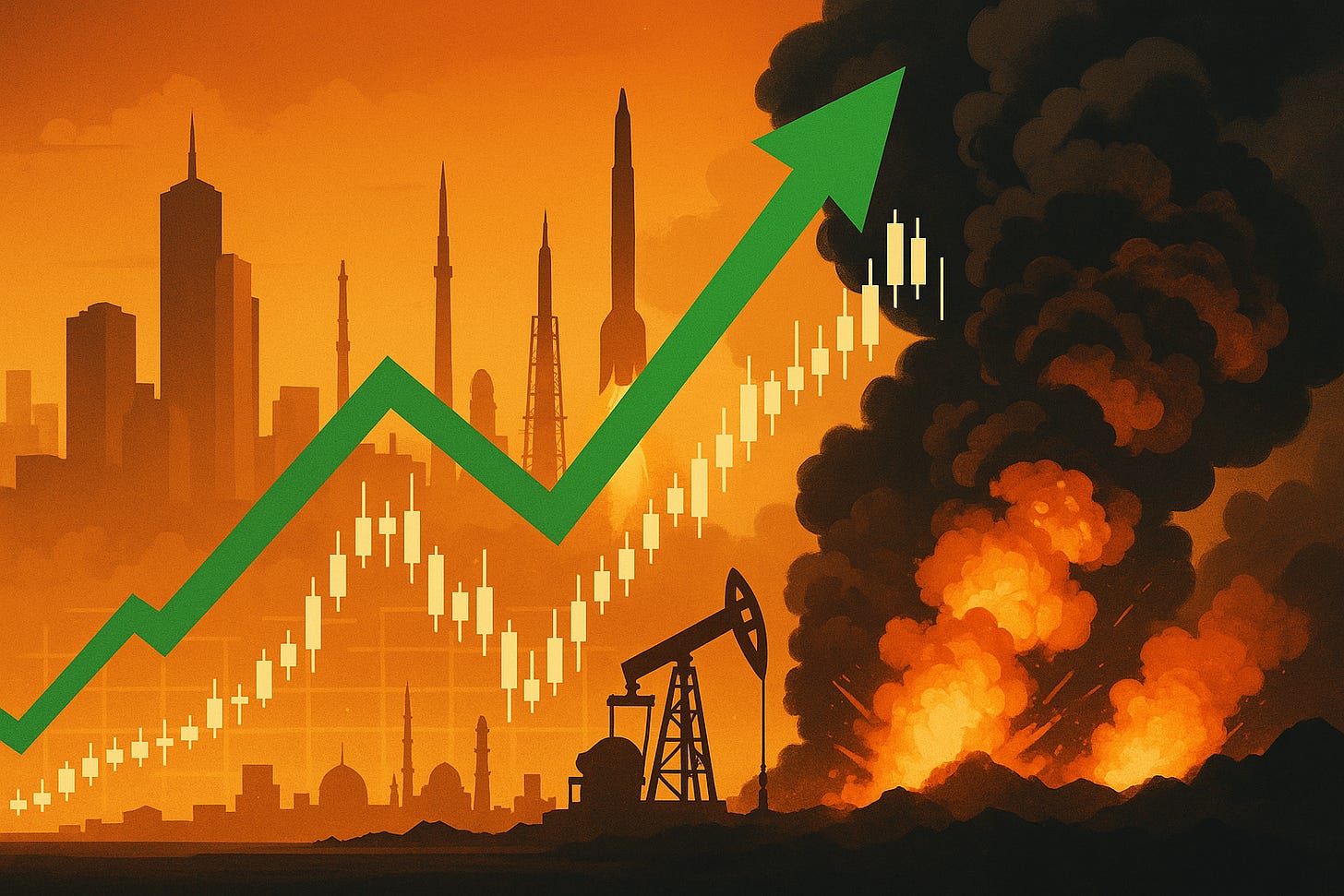Conflict in the Middle East is, unfortunately, not a new occurrence—but each time it flares, markets tense. Traders crowd into crude, defense stocks rally, and the VIX twitches like it’s seen a ghost. With the current situation in the Middle East, it’s worth zooming out and asking: how do markets historically respond to conflict in the Middle East? And what are the likely outcomes this time?
A Brief History of War and the Markets
Yom Kippur War (1973)
Oil prices quadrupled after OPEC’s embargo, sparking an energy crisis and stagflation in the U.S. The S&P 500 fell ~17% in the months after.
Gulf War I (1990-91)
Markets dropped on the initial invasion of Kuwait, but by the time U.S. forces launched Operation Desert Storm, equities had begun to recover. The S&P was up nearly 20% by the war’s end.
Iraq War (2003)
Markets priced in a prolonged conflict, but the rapid fall of Baghdad triggered a relief rally. The S&P 500 rose ~13% in the first 3 months post-invasion.
2023 Israel-Hamas Conflict
Initially saw spikes in crude and defense (e.g., $RTX, $LMT), but broader equity markets remained largely resilient, pricing in a contained regional conflict.
Takeaway: The market’s response hinges not on whether there's conflict—but on how widespread, how prolonged, and how much it disrupts oil flows.
Oil Is the Domino
The Middle East still accounts for over 30% of global oil production. Any conflict that threatens the Strait of Hormuz—a chokepoint for ~20% of world oil—has disproportionate impact on crude prices and inflation expectations.
Recent example:
Houthi attacks on Red Sea shipping? Brent popped 10% in a week.
Iran-Israel missile exchanges? WTI flirted with $90 before retracing.
If this current war expands—say, if Iran enters directly or Hezbollah escalates—it’s plausible to see WTI above $100, with ripple effects across energy, transportation, and inflation-sensitive sectors.
Likely Market Outcomes
I am not an expert on geopolitical conflicts but I see two potential scenarios:
Scenario 1: Full Regional War
Geopolitics:
Should Iran's leadership harden—possibly spurred by domestic pressure amidst energy shortages and sanctions—proxy forces like Hezbollah intensify, and Iran threatens direct closure of Hormuz. U.S. Fifth Fleet and allied forces prepare for potential naval confrontation .
Markets:
Oil could spike 75% in a worst-case scenario (~$130+), supply fears would surge, equities drop >10%, and inflation surges . JPMorgan and other market experts stress the risk of a sustained shock if Hormuz closes.
Investor Strategy:
Max defense: long oil, gold, Treasuries.
Short airlines, EM equity.
Consider central bank responses if stagflation hits.
Scenario 2: Diplomatic De-escalation
Geopolitics:
With Trump and allies pushing for talks, and international figures like Macron and Xi calling for calm, Iran might see internal pressure (blackouts & unrest), prompting a shift toward negotiations or regime moderation. If Iran backs off and reforms, the crisis eases.
Markets:
Oil drifts back to $60–70; equities, particularly in Israel and U.S., rally to fresh highs (S&P testing all-time levels) . Defense stocks cool as tensions fade.
Investor Strategy:
Rotate out of war hedges into cyclicals, tech, EM.
Lock in profits from gold/energy.
Position for Fed rate cuts tied to lower inflation.
Takeaways
We're in a macro regime still shaped by sticky inflation, tight labor, and Fed pause expectations. A major Middle East conflict acts as an inflation accelerant—possibly derailing soft-landing narratives. If war breaks out and oil runs, the next CPI print matters more than the next missile.
The market isn’t moved by headlines; it’s moved by implications. War in the Middle East isn’t bullish or bearish on its own—it’s about what it does to energy flows, inflation expectations, central bank posture, and global risk sentiment.
As always: the playbook is written in probabilities, not certainties.
Stay nimble, stay rational.
— Bulls on Parade




